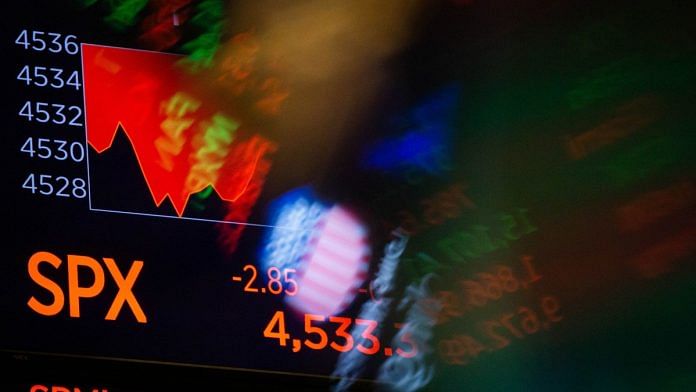In late 2019, when I had a nationally syndicated radio show, I was asked by my partners to come up with some predictions for coming year in stocks, bonds, politics, geopolitics and some other topics. I protested, saying it was impossible to look out an entire year with any sort of clarity and that we were setting ourselves up for embarrassment. I lost the argument, and I came up with a list of 12 predictions. Most of them ended up being horrendously wrong.
I said gold would outperform stocks by 40% – and it did! But only for a moment during the early days of the pandemic. I also forecast that oil prices would probably go up a lot (they actually went negative for the first time in history, falling to as low as minus $40 a barrel), and that either Donald Trump or Bernie Sanders would win the presidential election. I did correctly predict that the Federal Reserve would cut interest rates, but I was right for the wrong reasons.
Such is the nature of forecasting. You have a logical, well-thought out thesis and then some exogenous event happens that screws everything up – like Russia invading Ukraine and upending global markets. Economists and strategists know this all too well. So much so that some consider them little more than “entertainers.”
The same thing is happening again this year. Oil is making fools of people again, rising to $100 per barrel, which very few professional forecasters predicted (though some hardhat Twitter accounts got it right). Interest rates are on the rise, while the macro doom crowd continues to predict deflation and negative rates. And gold has broken out to the upside, just when everyone had given up on it.
One thing you tend to notice about Wall Street forecasts is their strong central tendency. Heading into 2021, most every economist at a Wall Street firm was predicting that inflation would be about 2% (it was actually 7%) and that gross domestic product would expand about 4% (it expanded 5.6%) . The reason for this is because if you’re an outlier and you’re wrong, then there is shame associated with your forecast. There is nothing worse than being wrong and alone. But if you’re wrong along with everyone else, then that’s acceptable. And the benefits of being right and alone do not outweigh the downside of being wrong and alone.
There are lots of smart people in the profession who have thoughtful things to say. Nobody sets up a trade based on a forecast that the S&P 500 Index is going to finish the year at 5,000 or inflation is going to be 3%. Rather, the value can be found in the thought process that goes into the forecast. Strategists don’t just pick a number out of a hat; there is a lot of research and deliberation that goes into it. Trying to predict whether economic activity will rise or fall is almost impossible because what you’re really trying to do is predict human behavior, which is based entirely on psychology. Human beings are notoriously unpredictable.
So how is one to use the waterfall of economic forecasts? The key is to not pay attention to the prediction itself, but the thinking behind the prediction. The good stuff is on page 83 of the research report, not the S&P 500 year-end prediction on the first page. Fixed-income and equity strategists are thoughtful, talented people who put in pretty long hours analyzing thousands of economic inputs to make their forecasts. The year-end S&P 500 targets are kind of a running joke on Wall Street, but the research that goes into it is fascinating stuff.
It’s not the responsibility of Wall Street to come out with better forecasts. The forecasts are fine, but they’re rendered unusable by the constant arrival of new information. The responsibility is on the end users to spend a few hours digging into the research. Many people are scornful of sell-side research, but it serves a purpose, particularly in collecting and aggregating large amounts of data and presenting it in a usable fashion.
Anyone who correctly guesses the future level of a stock index, interest rates or the price of oil is probably lucky. It’s nothing to be celebrated. What is to be celebrated is making people smarter, and the true thought leaders on Wall Street are capable of that. –Bloomberg
Also read: Chinese economy may be hit harder in wake of Ukraine-Russia crisis



